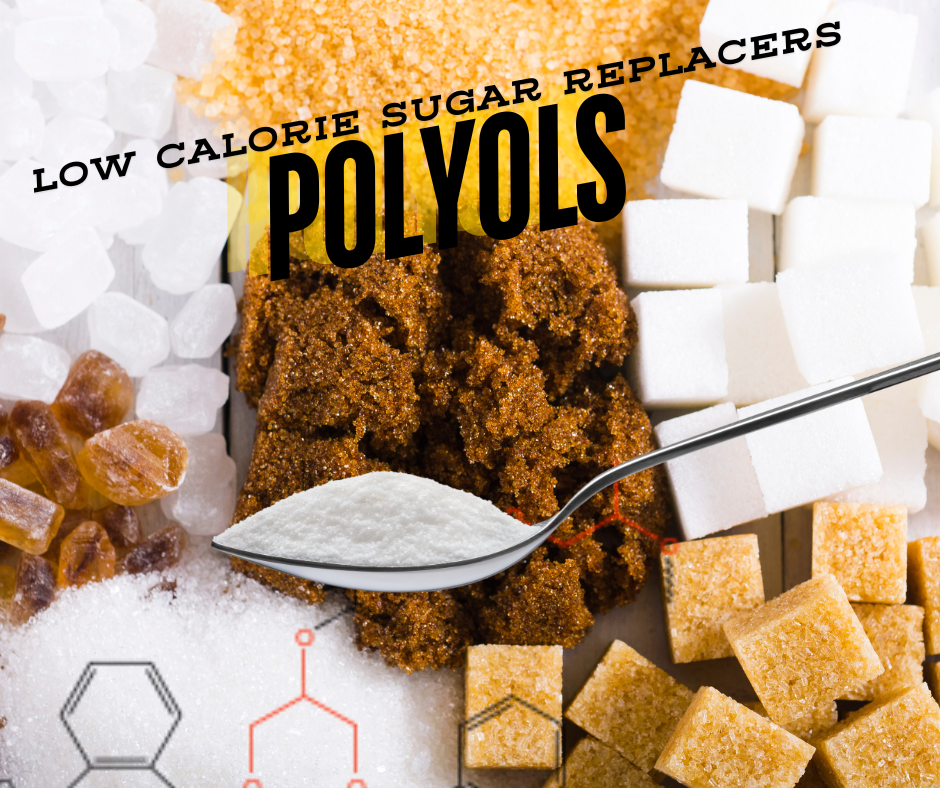Introduction: For those monitoring their carbohydrate intake, especially individuals managing diabetes or those on ketogenic diets, understanding what counts towards their daily carb limit is crucial. One important component that often raises questions is polyols, also known as sugar alcohols. This blog post explores what polyols are, their impact on blood sugar, and why they can be subtracted from total carbohydrates in food.
What are Polyols? Polyols are a type of carbohydrate known as sugar alcohols. Despite their name, they neither contain sugar nor alcohol as commonly understood. Polyols occur naturally in some fruits and vegetables and can also be manufactured industrially. Common polyols include xylitol, erythritol, sorbitol, and maltitol, each widely used as sweeteners in sugar-free and low-carb products because they provide sweetness with fewer calories than sugar.
Chemical Structure and Absorption: The chemical structure of polyols allows them to be only partially absorbed by the body. This incomplete absorption is due to their complex molecular structure, which is not fully broken down during digestion. As a result, polyols have a lower caloric value compared to regular sugars and a minimal impact on blood glucose levels, making them an ideal sweetener for diabetic food products and diet plans focusing on blood sugar management.
Impact on Blood Sugar and Insulin: Polyols have a minimal effect on blood sugar and insulin levels. This is measured by their glycemic index (GI), which is significantly lower than that of sucrose (table sugar) or glucose. For instance, while glucose has a GI of about 100, the GI of erythritol is close to 0, and xylitol has a GI of about 13. The lower GI of polyols translates to less significant spikes in blood sugar following their consumption, which is beneficial for preventing the highs and lows associated with sugar intake.
For further reading on the glycemic index of polyols and their health implications, visit Diabetes UK, which provides a comprehensive overview.
Research in the European Journal of Clinical Nutrition details the reduced glycemic response when consuming polyols compared to high-GI carbohydrates. You can explore this research more deeply by visiting this link to the study: European Journal of Clinical Nutrition – Polyols and Blood Sugar.
Why Subtract Polyols from Total Carbohydrates? Since polyols are partially absorbed and have a minimal impact on blood sugar levels, they can be subtracted from the total carbohydrate count on nutrition labels. This calculation, known as “net carbs,” helps provide a more accurate measure of a food’s carbohydrate impact. Net carbs are calculated by subtracting the amount of polyols (and dietary fiber) from total carbohydrates because these components do not provide full caloric value nor raise blood glucose like other carbs.
Supporting this, the American Diabetes Association discusses how the body processes polyols and their limited effect on blood sugar levels in a comprehensive overview, which you can read here: American Diabetes Association – Metabolism of Polyols.
Net Carbs Calculation: Total Carbohydrates
- Fiber
- Polyols = Net Carbs
This method is particularly important for people following ketogenic diets, where maintaining a state of ketosis requires strict monitoring of carbohydrate intake.
Products Featuring Polyols at Slim & Smart: At Slim & Smart, we understand the importance of managing carbohydrate intake. We offer a variety of products that use polyols as sweeteners, allowing you to enjoy sweets and treats without compromising your health goals. From low-carb snack bars to sugar-free syrups, our products are designed to help you maintain a healthy, balanced diet.
Visit our website at Slim & Smart to explore our range of low-carb, sugar-free products that can be a part of your healthy lifestyle.

